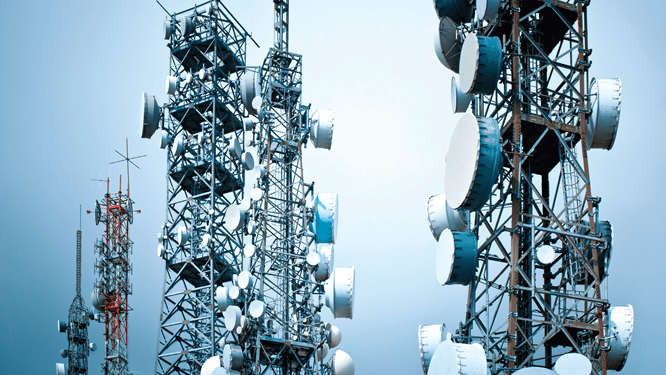By Sonny Aragba-Akpore
Connectivity and ease of mobile communications are on the rise as new technologies have introduced direct mobile access to the satellite.
With this, mobile devices including mobile phones and others can now connect and access services directly via satellite.
Although,the process has been on for nearly a year now but its manifestations came on stream recently when Starlink announced its commercial launch across some regions including Sub Sahara Africa.
It claimed that prior to this introduction,it had negotiations and signed agreements with various Mobile Network Operators (MNOS) in countries where its satellites have footprints and coverage.
As at July 27, 2025, Starlink had launched a total of 661 direct-to-cell satellites, according to a Facebook post by SpaceX.
These satellites are specifically designed to connect directly with standard mobile phones without the need for specialized hardware. SpaceX is actively expanding its direct-to-cell constellation, with plans to launch many more satellites in the future.
Satellite-to-mobile connectivity allows standard cell phones to connect directly to satellites, enabling communication in areas without traditional cellular coverage.
This technology, like Starlink’s “Direct to Cell,” uses satellites equipped with advanced modems to act as cell towers in space, providing access to text, voice, and data services. This can bridge communication gaps in remote areas, during emergencies, and for global connectivity.
SageNet lists Amazon, Apple, AST SpaceMobile, and Huawei among those developing satellite-to-cellular projects but SpaceX’s Starlink appears to be a leading provider of satellite-to-mobile connectivity, with plans to offer text, voice, and data services globally.
So far iPhones with Emergency Save Our Souls (SOS) via satellite allow users to connect to emergency services in areas without cellular or Wireless Fidelity (Wi-Fi) coverage.
Satellites with specialized modems (like Starlink’s eNodeB) act as cell towers in space, receiving and transmitting signals from standard fourth generation (4G) commonly referred to as Long Term Evolution (LTE) phones.
This technology has the potential to disrupt the telecommunications landscape by offering universal mobile connectivity, particularly in areas where traditional networks are limited.
The benefits include bridging Connectivity Gaps by providing communication in areas lacking traditional cellular infrastructure, such as remote regions, oceans, and during natural disasters.
Unlike traditional satellite phones, this technology works with existing, unmodified fourth generation (4G) or LTE phones, eliminating the need for specialized equipment or apps.
Besides,Satellites provide services anywhere on Earth, even in remote, rural, or disaster-stricken areas including where traditional cell towers are unavailable.
To activate the signal on users mobile phone, they don’t need to do anything. The mobile devices work by automatically searching for Starlink satellites in low orbit and connecting to them to receive satellite internet. In other words, the connection is automatic.
In places where there’s no terrestrial coverage, the phone will connect to the satellite automatically without the user having to take any action. This is especially useful for areas with poor coverage and areas without mobile fiber.
Although this appears to be a breakthrough, especially with the ability to communicate without antennas,but while on the long term, the economic benefits for the company and Elon Musk’s conglomerate will be incalculable, however in terms of communication, it’s a clear step forward.
Unlike it’s other services that are currently in use in homes and offices with antennas ,the connectivity to mobile phones is without antennas but like its other services,the cost of this mobile connection may be prohibitive.
At the moment, Starlink has not named or commented on the cost of acquisition but there are indications that the services will be free where Users will be able to access it as if it were an extra from their telephone company. “This is already the case in countries like the United States, Canada, and Japan. In order to implement Starlink in different countries around the world, Elon Musk’s company claimed to have signed agreements with mobile operators in those countries.
“The countries where the services are available are on the map on the official Starlink website indicating which countries already have the network available, which are in development, and which do not have access to it” the company explained .
It states further that what users will be able to do include the ability to send and receive text messages (SMS) and share their location.
“This is a major advance because, although in wealthier countries, people are accustomed to constant communication, we mustn’t forget that there are areas of the world that are severely isolated. The idea is that, with the passage of time and further improvement of this technology, people will be able to start making calls and have access to more options through Starlink.”
The purpose of direct satellite communication is primarily to provide services in under served and unserved regions of the world.This is perhaps one way to take services to the people who are offline because of lack of internet connectivity.
By the International Telecommunications Union (ITU) calculations,a third of the global population (2.6billion) people are not connected.
By Starlink,s introduction of the services,the cost of acquisition and sign on appear elitist as an insignificant part of the unserved may not be able to acquire the high end mobile phones prescribed by Starlink.
“Starlink’s main objective is to provide internet connection in the most remote places on the planet. Those areas where it is practically impossible to have internet access. Now, mobile phones will be able to connect directly to the satellite signal without the need for intermediaries, like towers or antennas.” the company submits.
There is a caveat on the types and models of mobile phones that will be able to access the services.
The mobile phones that will have access, for now, include iPhone models starting with the iPhone 14; the Samsung Galaxy A14, up to the A54 and the S21 up to the S25; Google Pixel 9 onwards; Galaxy Z Flip 3 up to the Z Flip 6 and the Galaxy Z Fold3 onwards; The others are Motorola: Razr (2024), Razr Plus (2024), Moto Edge, and Moto G Power 5G (2024).
The entire European Union is covered and within Starlink’s range, so are North America and most Central and South American countries.
It does not cover parts of Asia particularly China.
Among the places where it is not available are Cuba and Venezuela,Russia, Afghanistan, and Syria .
The places covered in Africa include Zambia, Mozambique, the Congo, Nigeria, among others.
There is also massive coverage in Australia and New Zealand.
The ITU has developed recommendations and standards for integrating satellite systems into IMT (International Mobile Telecommunications) networks, ensuring interoperability and efficient operation. This includes recommendations related to satellite capacity, latency, virtualization, energy efficiency, and security, which are all relevant to direct-to-mobile services.
“The ITU plays a crucial role in allocating radio frequencies for satellite communications, including those used for direct-to-mobile services. This includes ongoing studies for potential new allocations to the mobile-satellite service to complement terrestrial IMT networks, as well as considering additional traditional Mobile Satellite Services (MSS) allocations.
The ITU involvement includes the development and regulation of direct-to-mobile satellite connections, also known as direct-to-device (D2D) or direct-to-cellular (D2C) services. These services aim to provide mobile connectivity in remote, rural, or disaster-stricken areas by enabling standard mobile phones to connect directly to satellites, bypassing traditional terrestrial cell towers. The ITU says it is addressing this through studies and recommendations related to spectrum allocation, regulatory frameworks, and technical standards for integrating satellite systems into next-generation networks.
*Aragba-Akpore, veteran journalist, was Head, Media Relations, Nigerian Communications Commission (NCC)









